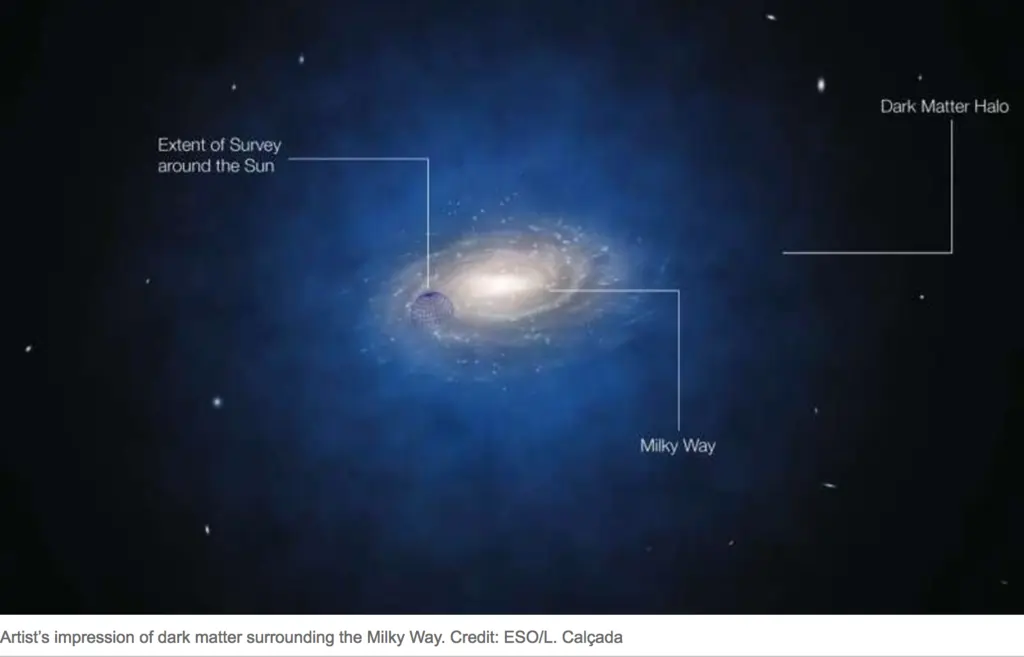What is Dark Matter and Dark Energy?
Our observable universe has contrasted via all the atoms and light, which build up less than five per cent of the entire cosmos. The rest of the universe is composed of dark energy and Dark Matter that does not interact with electromagnetic force. Apart from that, Dark Matter is implied by gravitational force, which cannot be illuminated via general relativity except when more Matter exists that can be perceived. Such phenomena generally occur in relation to the formation of galaxies, cosmic microwave background and the motion of galaxies in galaxy clusters.
Like normal Matter, Dark Matter occupies space and holds mass; however, it does not absorb, reflect, and radiate electromagnetic waves, which makes it challenging for scientists to detect its presence. Our universe consists of 5 per cent normal matter and around 26 per cent Dark matter alongside 68.2 of energy recognized as dark energy, and 85 per cent of the entire mass constitutes Dark Matter. Consecutively, Dark Matter and dark energy establish 95 per cent of the entire mass and energy.

Final Parsec Problem
In the astrophysics domain, renowned scientists and theoretical physicists are always trying to figure out the mysterious phenomena of our universe, like the expansion of the universe. However, one of the unsolvable and complex problems that have yet to be critically explained by physicists is turn out to be the “Final parsec problem”. Many astrophysicists figured out that at the centre of most of the galaxies, a supermassive black hole is present, and this might be a vital facet to solving the “Final Parsec Problem”.
The notion of this theoretical conundrum may explain how three supermassive black holes colliding behave differently than just a pair. In modern years, many astrophysicists have revealed the mystery regarding colliding galaxies. However, the collision of supermassive black holes remains a conundrum. Apart from that, when the collation between galaxies happened, it gave rise to questions about how supermassive black holes reside in the centre of different galaxies merging. However, many astrophysicists face concerns when they try to assess how this occurs.
The amount of energy shared between black holes might be a driving force and transfer energy to surrounding cosmic dust and gases, which might provide a better outlook for establishing this theoretical aspect. Deep into the notion of the final parsec problem, it has been identified that when two supermassive black holes have come extremely close, they collide since gravitational waves considerably drive their orbital energy. However, it is still unclear in which way their orbits continue to become lesser by final parsec, and there is a gap which is yet to be uncovered by physicists.
Binary black hole

A Binary black hole is comprised of two black holes located in close orbit around each other. A supermassive black hole generally has a mass which is equivalent to the mass of millions of times of sun, and this astronomical phenomenon indicates the moving traces of how the black holes redirect light emanating from hot cosmic clouds, which is known as an accretion disk.
This is demonstrated by NASA, which sheds light on this kind of binary system that may uphold accretion disk enduring millions of years. As of 2024, the model of self-interacting dark Matter may extract the required orbital momentum from the binary system of “supermassive black holes” to sustain for a longer timeframe to continue into the colliding stage, which is induced due to the gravitational waves. As a result, it might provide further solutions to the Final Parsec Problem, which has so far attracted the positive attention of many scientists to disclose the mystery of how massive black holes collide or merge.
In the vast space of endlessness, many things are still left undiscovered, and it has been said that even with unidentified objects and theories that go around, what lies ahead is simply unknown and yet to be explored.


